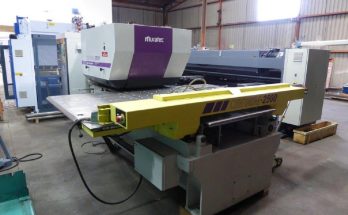Surface milling technology is an age-old manufacturing technique that’s more relevant today than ever before. With the advent of computerized Computer-Aided Manufacturing programs, surface milling has advanced by leaps and bounds as it becomes easier to incorporate this method into modern manufacturing. The process of surface milling entails the removal of material from the outermost layers of an object to reduce volume, weight, decorate, or even engrave marks. Surface milling will help improve several aspects of items, parts, or tools.
What Is Surface Milling?
In modern manufacturing, surface milling is used for accurate and fast cutting of intricate shapes using computer-aided programs. It is also helpful for high-precision cutting and shaping in engineering applications. The use of intelligent milling solutions helps meet the requirements of the aerospace industry and other manufacturing industries.
Advantages of Surface Milling
Surface milling technology has found its way into various manufacturing industries and has provided significant advantages to producers over traditional machining techniques. The resulting increase in production rates, which comes from using surface milling technology instead of standard machining techniques, is one main advantage. Here are the advantages of using surface milling in modern manufacturing.
-
Applicable to Various Materials
Surface milling applies to various materials, including thin sheet metal parts, glass, ceramics, stone, coatings, pastes, plastics, and foam. More complex geometry applications include molds, dies, and electro-formed parts. Materials can be plastic or metallic alloys with varying levels of hardness and flexibility and high-precision porous materials such as carbide, which are difficult to cut using conventional milling methods because they easily break when machining occurs near their surface.
-
High Tolerance Accuracy
Surface milling achieves high tolerance accuracy by regulating cutting speed during operation and eliminates tolerances greater than ±0.003 inches (0.08 mm). The operator sets the desired cutting speed according to material type and diameter via a machine’s touchscreen control system or manual controls.
Once set, that rate remains constant throughout production, resulting in a highly accurate and consistent product. With multiple cutting tools available, it’s easy to alter a surface milling machine’s tooling configuration to suit specific requirements for each job. There is no heat generation on working surfaces like there would be with other processes.
-
Prevents Distortion
A rotating abrasive disk cutter performs machining during surface milling manufacturing. The process subjects both sides of the material undergoing machining to equal amounts of stress; thus, it keeps distortion and uneven cutting from occurring. Surface milling, therefore, ensures that components fit together precisely or lay flat on another surface.
However, on the other hand, conventional milling subjects stress only one side of an object, resulting in distortion. Thus surface milling produces perfectly aligned pieces.
-
Reduces Processing Time, Cost, and Wastage
Another benefit of the surface milling process for modern manufacturing includes faster processing time and improved quality. When creating a product, it’s essential to streamline production processes to reduce cost and improve quality. With surface milling technology, manufacturers can achieve both in one easy step.
On top of saving time and improving quality, surface milling technology also reduces scrap waste and cuts down on wasted material. Cutting back on these wastes increases profits and improves environmental impact. Surface milling is also less complex than many other manufacturing techniques—this means there are fewer steps involved during operation, which can translate into significant time savings over traditional manufacturing methods.
-
Allows Small Kerf Width Milling
One area where surface milling technology dominates is in small kerf width milling. In these applications, smaller-diameter end mills help machine a workpiece with reduced material removal. One potential advantage of using surface milling is that advanced high-speed surface machining techniques make working with hard-to-machine materials such as glasses, ceramics, and superalloys possible.
Surface milling eliminates many limitations associated with large diameter end mills, making it well suited for these types of applications; in fact, there are few limitations on diameter when the surface roughness is no longer an issue.
-
Surface Milling Helps Improve Surface Finish
One significant advantage of using a surface milling machine is leaving a clean finish on your parts. Surface finish measures how smooth an object’s surface is—and it’s essential for any metal part you want to use for heavy-duty work. For example, in engineering applications, you can improve durability and extend service life by reducing friction between moving components or rotating shafts and bearings. You can achieve this through surface milling to enhance the surface finish.
Conclusion
The applications of surface milling technology are endless. That’s because it can perform countless processes and functions while offering greater flexibility than other milling techniques and materials. With increased speed, accuracy, reduced labor cost, fewer scrap rates, and better quality control over virtually any material, surface milling technology is an intelligent choice for manufacturing engineers.




